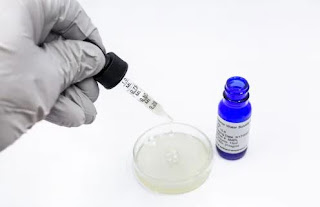Where Does CBG Originate? | Bona Voluntate
You are now aware that THC and CBD are derived from CBG. But where does the mother cannabinoid originate?
The process, like most things in plants, begins with sunlight. Cannabis plants use photosynthesis to convert light energy into simple carbohydrate sugars that can be used as energy. These energy units enable the plant to carry out fundamental physiological processes such as metabolism.
Plants then use the coenzyme acetyl-CoA to begin a lengthy and complex process involving a series of chemical reactions that we won't go into here. Cannabis plants produce two key molecules at the end of this process: geranyl pyrophosphate (abbreviated "GP") and olivetolic acid ("OA"). The majority of the work is done once these two molecules form and become available. A reaction between these two chemicals produces CBG Isolate Bulk, which then serves as the foundation for the other important cannabinoids mentioned above.
Why Should You Think About Using CBG?
But why should we be concerned about CBG? THC already handles the psychotropic aspect, and CBD does an excellent job of providing cannabis benefits without making us high.
All of these points are valid, but keep in mind that nearly every cannabinoid adds something new to the table. CBG Isolate Bulk has effects that are unique to the way it works in the body. It interacts with receptors both inside and outside the endocannabinoid system, resulting in effects that neither THC nor CBD can produce.
CBG research is still in its early stages. Without a doubt, the current evidence cannot be used to prove that the molecule causes specific outcomes. We must first conduct controlled human trials before we can provide an accurate assessment of what CBG is capable of.
The Nervous System and CBG
CBG binds to vanilloid receptors, some of which are involved in the transmission of pain signals throughout the central nervous system. The active ingredient in chilli peppers, capsaicin, acts on the TRPV1 receptor, causing heat and pain sensations. However, once activated, this site causes desensitisation, preventing the receptors from detecting additional irritation for a short period of time.
CBG is thought to work in a similar manner, but without causing irritation to begin with. Because it binds to the same receptor site, CBG may have similar calming effects.
Early on, the potential of CBG as a nervous system therapeutic was also investigated. According to a study published in the Journal of Neuroimmune Pharmacology, molecular relatives of CBG Isolate Bulk were able to soothe irritation[2] within nervous system components in mice.
The mother cannabinoid appears to help with muscle relaxation as well. CBG may help to relieve tension and tightness by inhibiting the reuptake of GABA, a relaxing neurotransmitter[3].
The Brain and CBG
Could CBG one day be classified as a nootropic cannabinoid? Maybe. The ability of CBG to improve mood has previously been investigated in mice[4]. Because CBG interacts with serotonin receptors in the brain, scientists want to know if it can help people who have tense or shaky nerves.
CBG's neuroprotective effects were investigated in a study published in the journal Neurotherapeutics. The cannabinoid was tested in a Huntington's disease animal model, which affects mood, movement, and cognition. Overall, their findings[5] pave the way for more in-depth research on the subject in the future.
The Digestive System and CBG
The importance of the digestive system in human health has been highlighted by recent discoveries about the microbiome and gut health.
IBS affects 10-15% of the population in Europe and North America. The condition, which causes stomach pain, cramps, and bloating, is most likely caused by gastrointestinal immune dysfunction.
CBG Isolate Bulk may play a role in bone health in the future. Osteoporosis occurs when cells that break down bone outcompete cells that lay down bone tissue. Its development is influenced by genetic factors, hormonal changes, and a lack of appropriate stress in the form of exercise.
Although preliminary research has looked into whether CBG can aid in bone healing, definitive answers about CBG's bone-health-promoting potential are still a long way off.
CBG in the Future
CBD gained popularity after researchers discovered its mechanism and potential effects. Following that, consumers flocked to the cannabinoid, and many are now raving about its effects. Wholesale CBG Distillate will most likely follow suit. Although preliminary research appears promising, larger human studies are needed to fully comprehend what the cannabinoid is capable of.
Many cannabis and hemp-derived products containing high levels of CBG, ranging from raw flower to oils, are entering the market. In the near future, CBG is expected to join the cannabinoid pantheon alongside CBD and THC.
Which is preferable, CBD or CBG?
Neither CBD nor CBG is better than the other. Despite their similarities, they operate in distinct ways. CBD has unquestionably more scientific evidence and is more popular. However, as CBG Distillate Wholesale is researched and becomes more popular, users will most likely choose it alongside THC and CBD formulations.
Is CBG risk-free?
According to available research, CBG is both safe and well-tolerated in animals[7]. CBG, unlike THC, has no psychotropic side effects. If you want to try CBG, look no further than the Bona Voluntate collection of CBG Distillate Wholesale oils and high-CBG cannabis strains.
CBG: A Pricey Cannabinoid
CBG extraction and isolation from hemp and cannabis plants is a costly process. This cannabinoid is only found in trace amounts and has never been a breeding priority for cannabis. When it comes to cannabinoids, THC and, more recently, CBD have received the most attention.
Because the majority of cannabis strains contain less than 2% CBG, isolating a small amount of CBG necessitates the collection of a large number of mature flowers. Otherwise, a producer could lose an entire THC/CBD crop by harvesting early to capture more CBG Distillate Wholesale before it naturally converts to other compounds. CBG extraction necessitates costly equipment, and breeding new CBG-dominant strains can take years, increasing the cost.




Comments
Post a Comment